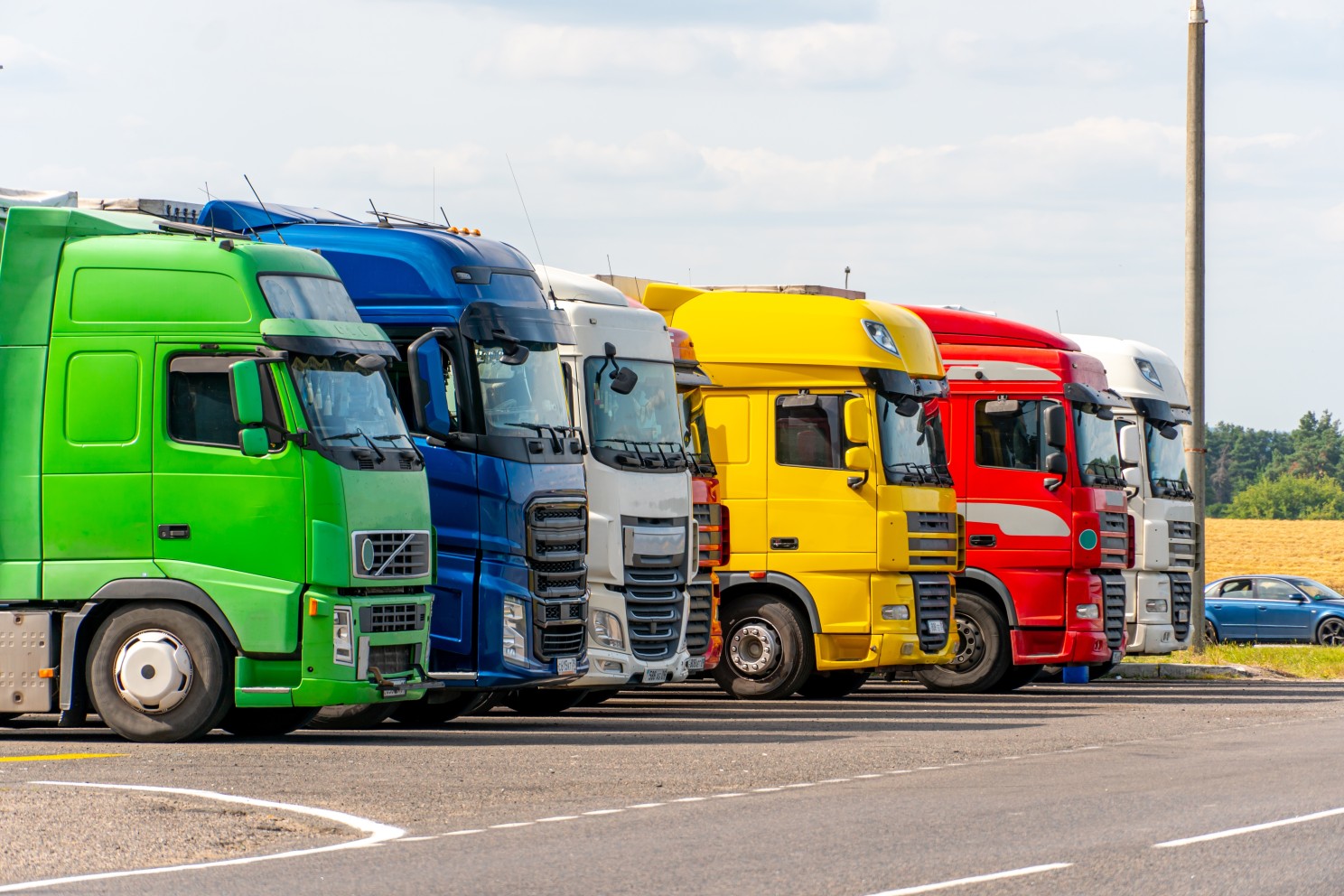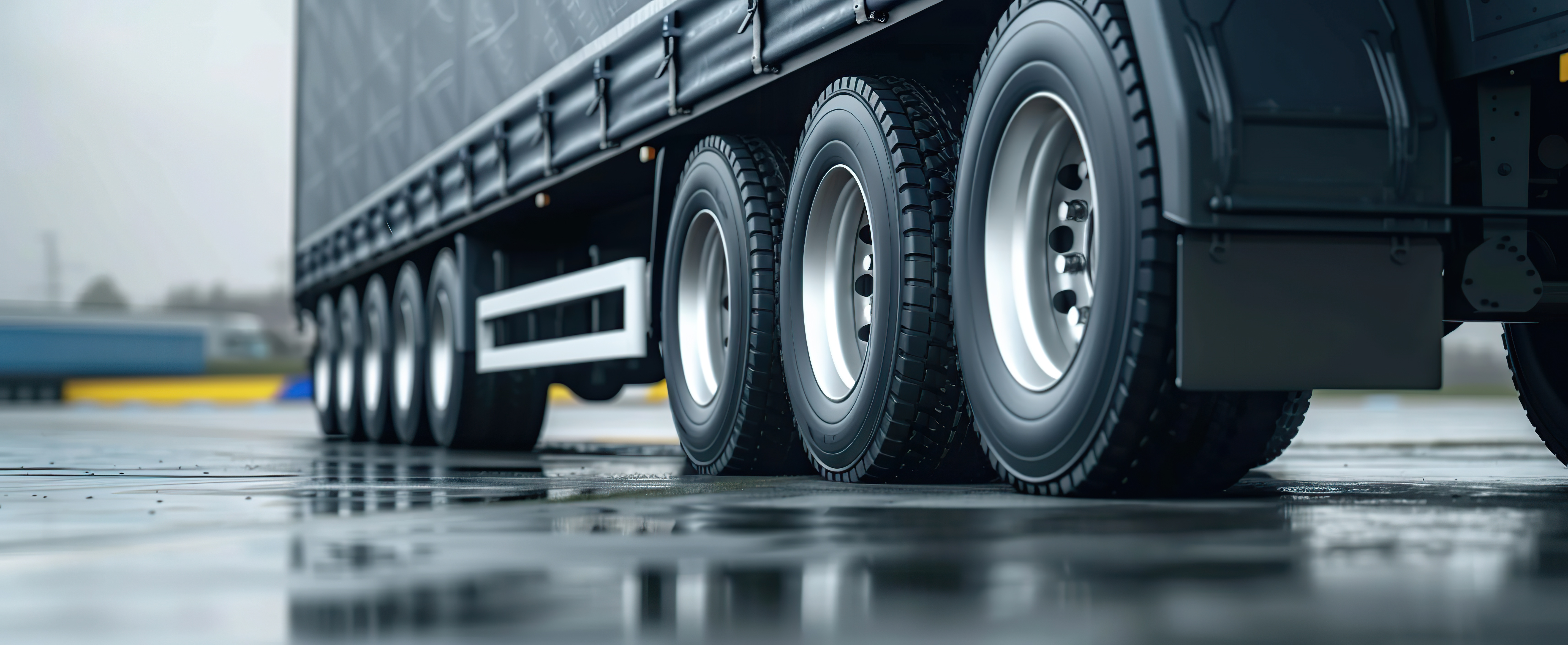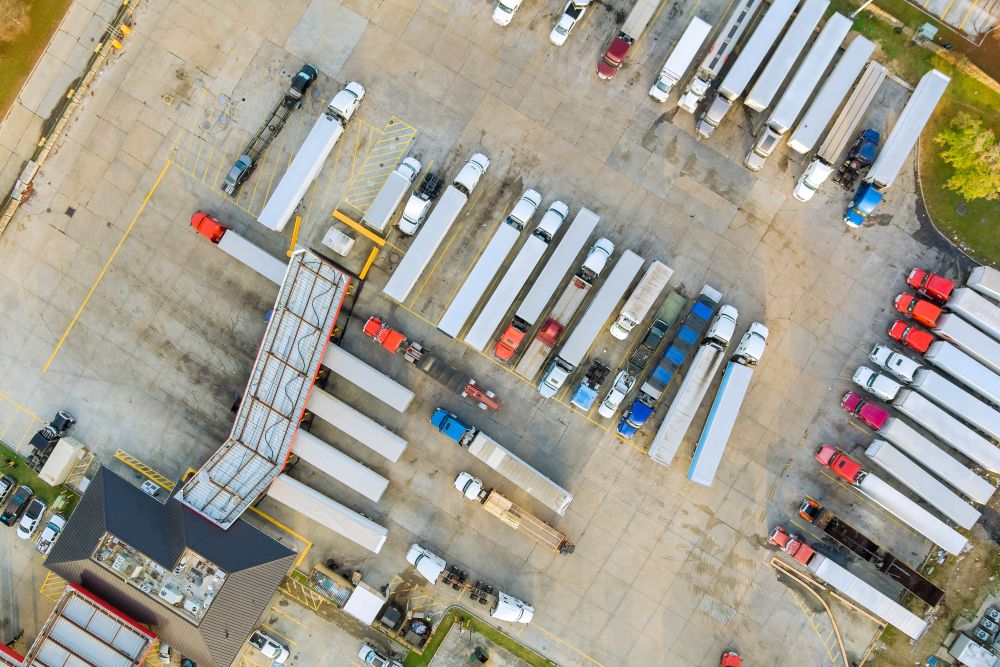
Josh Cousens
Was Flottenmanager über die EU-Transportvorschriften wissen müssen
Erstellt: 07.04.2025
•
Aktualisiert: 07.04.2025
Wir wissen, dass Fuhrparkmanager mit Fahrermangel, steigenden Kraftstoffkosten und der beträchtlichen Aufgabe zu kämpfen haben, die Lkw konform zu halten. Dazu kommt noch ein komplexes Geflecht von EU-Transportvorschriften, die sich schneller weiterentwickeln als die Kilometerleistung Ihrer Flotte. Kommt Ihnen das bekannt vor?
Willkommen an der Spitze des europäischen Güterkraftverkehrs.
Von Betriebsstundenregelungen bis hin zu Emissionszielen - die EU-Rechtsvorschriften sind eine große Herausforderung, aber auch ein Fahrplan für einen innovativeren, sichereren und nachhaltigeren Gütertransport.
Egal, ob Sie ein Familienunternehmen in Polen leiten oder vom Vereinigten Königreich aus europaweit tätig sind - den Regeln immer einen Schritt voraus zu sein, ist keine Option. Es geht ums Überleben.
Warum Fuhrparkmanager aufpassen müssen
Die EU-Verkehrsvorschriften wirken sich auf nahezu jeden Aspekt Ihres Betriebs aus: Fahrerstunden, Fahrzeugemissionen, Grenzkontrollen, Parken und digitale Compliance. Eine Nichteinhaltung könnte Geldstrafen, Verspätungen oder Vertragsverluste bedeuten.
Die gute Nachricht ist: Wenn Sie das System verstehen, können Sie es zu Ihrem Vorteil nutzen. Wenn Sie die Regeln kennen, ist es einfacher, Ihr Unternehmen von der Konkurrenz abzuheben.

Die wichtigsten EU-Transportvorschriften, die jeder Flottenmanager kennen sollte
1. Lenkzeiten und Fahrtenschreibergesetze
In der Europäischen Union gibt es strenge Vorschriften darüber, wie lange Fahrer auf der Straße fahren dürfen. Fuhrparkleiter müssen sicherstellen, dass ihre Fahrer:
- Fahren Sie nicht mehr als 9 Stunden pro Tag (zweimal pro Woche auf 10 Stunden erweiterbar).
- Fahren Sie nicht mehr als 56 Stunden in einer Woche.
- Machen Sie nach 4,5 Stunden Fahrzeit eine 45-minütige Pause.
Alle betroffenen Fahrzeuge müssen mit digitalen Fahrtenschreibern ausgestattet sein, um die Einhaltung der Vorschriften zu überwachen. Das Versäumnis, dies zu tun, ist einer der häufigsten Gründe für Sanktionen.
Erfahren Sie mehr über Fahrtenschreiberregeln hier.
2. Das Mobilitätspaket
Dieses weitreichende Reformpaket verändert den grenzüberschreitenden Güterkraftverkehr. Zu den wichtigsten Änderungen gehören:
- Regelmäßige Rückführung der Fahrzeuge in ihr Heimatland alle 8 Wochen
- Gleiches Entgelt für Fahrer, die in den EU-Gastländern tätig sind
- Neue Regeln für die Kabotage und die Entsendung von Fahrern.
Für Fuhrparkleiter, die internationale Transporte betreuen, ist dies ein großer Fortschritt.
Erfahren Sie mehr über das Mobilitätspaket hier.
3. Emissionen und Umweltvorschriften
Umweltzonen, CO2-Ziele für neue Lkw und Anreize für Elektrofahrzeuge sind nur der Anfang.
Fuhrparkmanager müssen die Euro-7-Emissionsnormen einhalten. Diese umfassen:
- Wissen, wo sich Umweltzonen befinden (insbesondere in Städten wie Paris, Berlin und Mailand)
- In sauberere Technologie investieren oder ältere Fahrzeuge nachrüsten
- Verfolgen Sie Emissionsdaten für die Berichterstattungspflicht.
4. Intelligente Fahrtenschreiber und digitale Einhaltung der Vorschriften
Die Europäische Union drängt auf eine automatisierte Durchsetzung:
- Intelligente Fahrtenschreiber sind in allen Neufahrzeugen vorgeschrieben.
- Diese Geräte übertragen GPS-Daten und können von den Behörden aus der Ferne gescannt werden.
- Digitale Flottenmanagement-Tools sind kein Luxus mehr - sie sind Ihr rechtliches Sicherheitsnetz.
5. Grenzüberschreitende Park- und Ruhezeitvorschriften
Fuhrparkleiter müssen Park- und Rastplätze unter Beachtung der Vorschriften zum Schutz der Fahrer planen:
- Die Fahrer müssen wöchentliche Ruhezeiten außerhalb des Fahrerhauses verbringen.
- Sichere Lkw-Parkplätze werden in einigen Regionen zur Pflicht.

Häufig gestellte Fragen
Wie lauten die EU-Lenkzeitvorschriften für Lkw-Fahrer?
Fuhrparkleiter müssen sicherstellen, dass die Fahrer die von der EU vorgeschriebenen Grenzwerte einhalten: 9 Stunden pro Tag (mit Flexibilität), angemessene Pausen und wöchentliche/monatliche Höchstlenkzeiten.
Was ist das EU-Mobilitätspaket für Lkw?
Die Reform des Mobilitätspakets sorgt für fairen Wettbewerb, das Wohlergehen der Fahrer und eine ordnungsgemäße Aufsicht im internationalen Güter- und Straßenverkehr - mit strengeren Regeln für Kabotage, Entlohnung und Rückführung.
Was passiert, wenn Sie gegen die Regeln des Fahrtenschreibers verstoßen?
Fahrer, die gegen die Vorschriften des Fahrtenschreibers verstoßen, müssen mit Geldbußen, möglichen Fahrverboten und einem geschädigten Ruf des Unternehmens rechnen. Die Nichteinhaltung der Vorschriften ist nicht nur ein Risiko - sie ist auch teuer.
Verlangen die EU-Länder Emissionsnormen für Lkw?
Ja. Die meisten großen europäischen Länder und Städte haben strenge Richtlinien und Emissionsziele, um die Luftverschmutzung durch Fahrzeuge zu reduzieren, sodass Flottenbetreiber vorausschauend planen müssen.
Das große Ganze
Fuhrparkmanager verwalten nicht nur Lkw, sondern auch Risiken, die Einhaltung von Vorschriften und den Ruf ihres Unternehmens. Das Verständnis der EU-Transportvorschriften ist der Unterschied zwischen Erfolg und Misserfolg im modernen Transportwesen.
SNAP macht diese Aufgabe handhabbarer. Vom digitalen Zahlungsverkehr bis hin zu Lkw-Parkplätzen und Compliance-Lösungen unterstützen wir die Menschen, die Europa in Bewegung halten.
Die Vorschriften werden strenger, aber die zuständigen Flottenmanager? Sie verschärfen auch ihr Spiel.
Sind Sie bereit, die Vorschriften einzuhalten, wettbewerbsfähig zu bleiben und die Zukunft des Güterverkehrs zu gestalten? SNAP heute freischalten.



